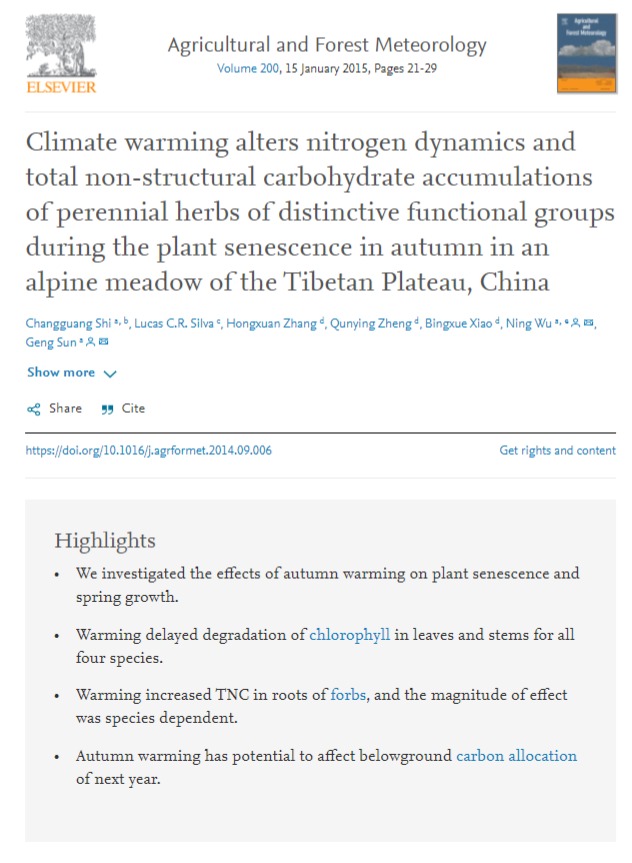
Although photoperiod is known to be the main factor driving plant senescence in perennial plants, temperature has also been shown to modulate this process, which suggests that climate warming will significantly impact the length of plant growing season and affect terrestrial productivity. To test this assumption, we measured the effects of simulated autumn warming on four perennial herbaceous species, i.e. Elymus nutans, Koeleria macrantha, Vicia unijuga and Allium atrosanguineum, representing two major plant functional groups (grasses and forbs), in a typical alpine meadow of the Tibetan Plateau. Warming was simulated using open-top chambers, and its effects on degradation of chlorophyll and nitrogen (N) concentration in leaves and stems were determined during the senescence processes in autumn. The potential effects of autumn warming on total non-structural carbohydrate (TNC) in roots, growth and flowering phenology were further investigated in the following year. We found that warming delayed chlorophyll degradation of perennial herbs in early phase but accelerated it in later phase, regardless of functional groups, which led to higher N concentrations in leaves and stems during the whole senescence period. Autumn warming also significantly increased TNC in roots as a result of the delayed process of chlorophyll degradation, although the magnitudes were dependent on functional groups, which may be explained by inherent differences in growth patterns and phenology between grasses and forbs. We demonstrate that warming can increase carbohydrate accumulation not only by enhancing activities of photosynthetic enzymes proved by many previous studies but by altering chlorophyll degradation and preferential allocation of resources to different compartments. Furthermore, these results suggest that the net effect of climate warming on terrestrial ecosystems will be determined by floristic composition, as contrasting immediate and lasting (one year) changes in nutrient use and carbon allocation in response to warming were observed among species.